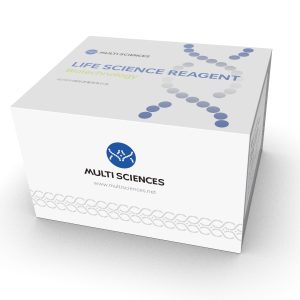HGNC ID: 601
Target Abstract:
Apolipoprotein A2 (Apo A2) is the second most abundant apolipoprotein in human plasma high-density lipoprotein (HDL), following Apo A1. It is the most hydrophilic protein among the exchangeable apolipoproteins. Apo A2 is synthesized by the liver and small intestine and exists in plasma as monomers or dimers. The Apo A2 gene consists of four exons and three introns. The four exons encode the 5′ untranslated region, signal peptide, a short N-terminal domain, and a C-terminal domain consisting of a variable number of lipid-binding amphipathic helices. Apo A2 stabilizes the structure of HDL by binding to lipids and influences HDL metabolism. The role of Apo A2 in lipid metabolism and atherosclerosis has important clinical significance. Apo A2 levels have been associated with susceptibility to atherosclerosis, increased levels of free fatty acids, body fat, and insulin resistance.
APOA2 Target Infomation Overview
- Target Symbol: APOA2, apolipoprotein A2
- Gene Groups: Apolipoproteins
- Alias Names: apolipoprotein A-II
APOA2, apolipoprotein A2 Target Infomation by Species
- Human
- Mouse
- Rat
Human APOA2 Target Information
- Target Symbol: APOA2, apolipoprotein A2
- Alias:
- Apo-AII
- ApoA-II
- apoAII
- apolipoprotein A-II
- NCBI_Gene: 336
- UniProtKB: P02652
Human APOA2 Predicted Functions
Enables several functions, including cholesterol binding activity; protein dimerization activity; and signaling receptor binding activity. Contributes to cholesterol transfer activity. Involved in several processes, including lipid transport; plasma lipoprotein particle organization; and regulation of lipid metabolic process. Located in blood microparticle and extracellular exosome. Part of chylomicron; spherical high-density lipoprotein particle; and very-low-density lipoprotein particle. Implicated in familial hypercholesterolemia. Biomarker of coronary artery disease; familial combined hyperlipidemia; obesity; type 1 diabetes mellitus; and type 2 diabetes mellitus.
Mouse Apoa2 Target Information
- Target Symbol: Apoa2, apolipoprotein A-II
- Alias:
- Alp-2
- Apoa-2
- ApoA-II
- Hdl-1
- high density lipoprotein 1
- NCBI_Gene: 11807
Mouse Apoa2 Predicted Functions
Enables high-density lipoprotein particle binding activity. Acts upstream of or within several processes, including cholesterol homeostasis; negative regulation of lipase activity; and regulation of intestinal cholesterol absorption. Located in extracellular space. Is expressed in alimentary system; embryo; liver; liver lobe; and lung. Human ortholog(s) of this gene implicated in familial hypercholesterolemia. Orthologous to human APOA2 (apolipoprotein A2).
Rat Apoa2 Target Information
- Target Symbol: Apoa2, apolipoprotein A2
- Alias:
- Apo-AII
- ApoA-II
- APOAII
- apolipoprotein A-II
- NCBI_Gene: 25649
- UniProtKB: P04638
Rat Apoa2 Predicted Functions
Enables cholesterol transfer activity. Involved in several processes, including animal organ regeneration; response to estrogen; and response to glucocorticoid. Predicted to be located in extracellular space. Predicted to be part of chylomicron; spherical high-density lipoprotein particle; and very-low-density lipoprotein particle. Biomarker of hyperthyroidism. Human ortholog(s) of this gene implicated in familial hypercholesterolemia. Orthologous to human APOA2 (apolipoprotein A2).

